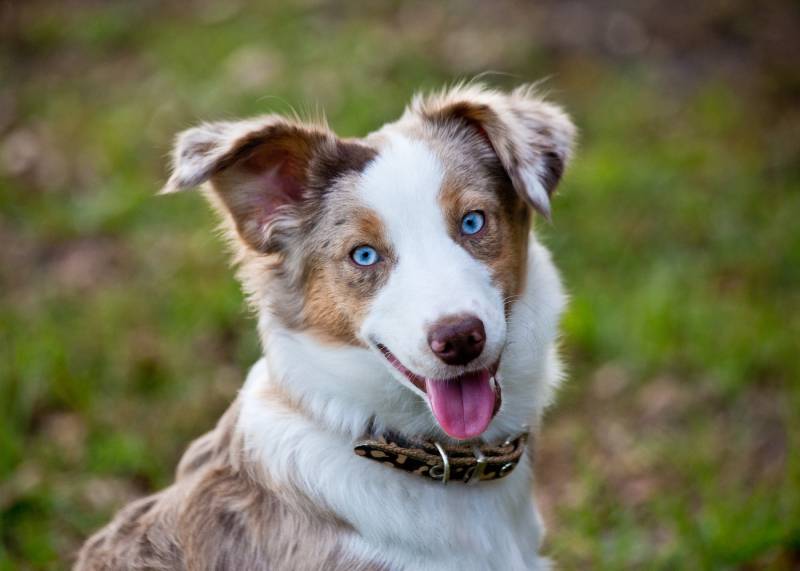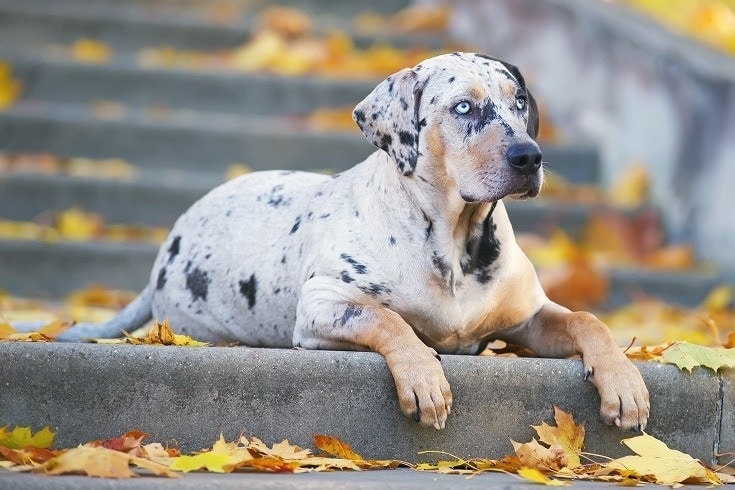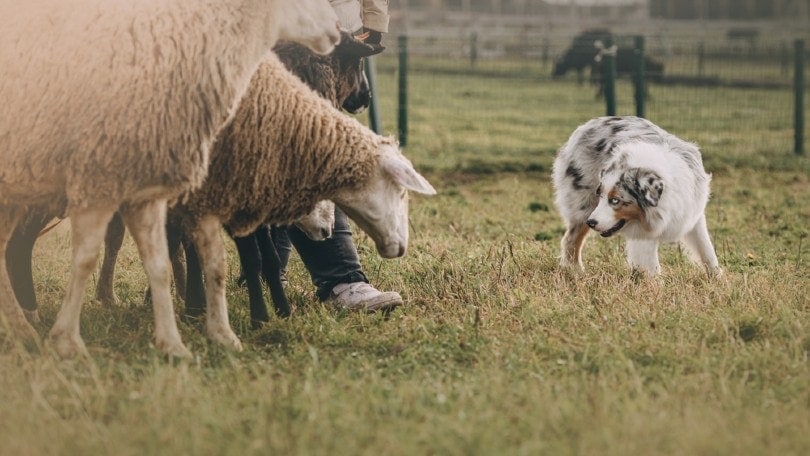Do Dogs Need to Run? Dogs’ Physical Needs Explained
Updated on
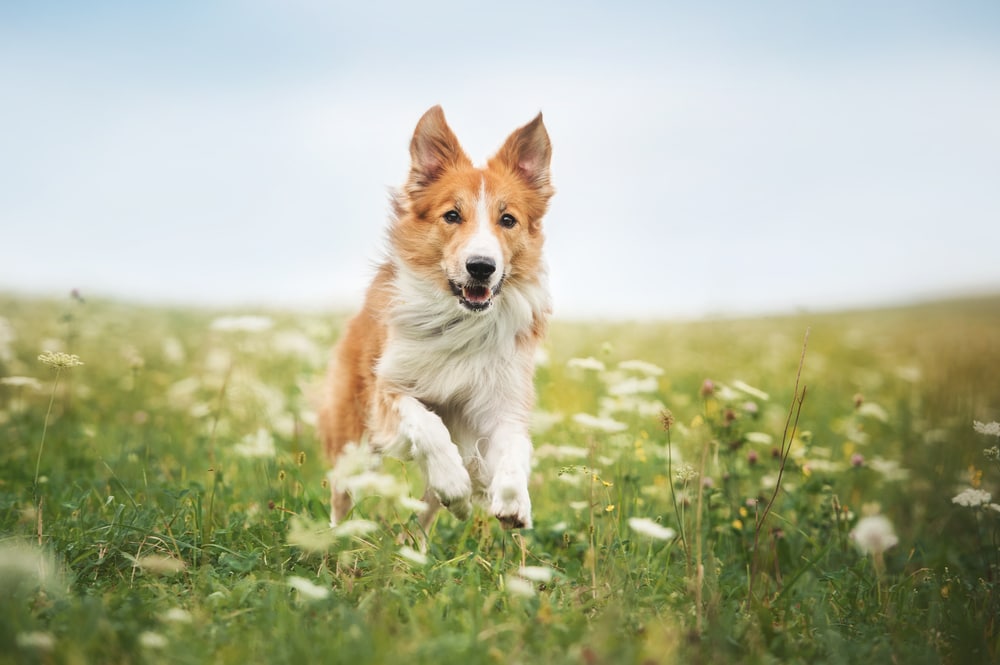
Like humans and other animals, dogs need enough exercise in their routine to remain healthy and in good shape. Many dog parents believe that their dogs need to run to accomplish this, but some dogs are simply not runners.
All dogs need to get physical activity and exercise every day. However, while some dogs love to run to fulfill their exercise and activity needs, others may prefer different activities.
Read on to learn why dogs don’t need to run, why exercise is important for our furry friends, how much exercise they need, and which activities can replace running.
Navigate through our article by clicking on the title you would like to review first:
- Do Dogs Need to Run?
- How to Keep Your Dog in Good Shape Without Running
- Factors that Determine How Much Exercise a Dog Needs
- Signs That Your Dog Needs to Run and Exercise More
Do Dogs Need to Run?
All dogs, regardless of their age and breed, need exercise in their daily routine to remain healthy, maintain a normal weight, and stay in good shape.
Physical activity is essential for dogs because it boosts their mental and physical health and reduces unwanted behaviors and risks of depression, anxiety, and obesity. It also gives you a chance to bond with your dog.
However, just because dogs need physical activity, that doesn’t mean they need to run. If your dog likes running, that’s definitely an activity that you can pursue with your furry companion. But if your dog doesn’t like it, you should consider other ways of getting your dog to be active.
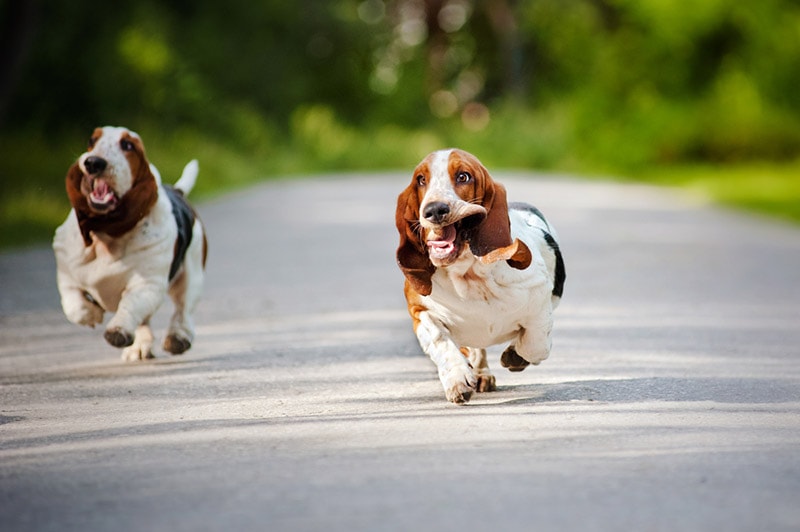
How to Keep Your Dog in Good Shape Without Running
Running is one of the most common ways that dogs can get exercise. But some dogs dislike running, which is why it’s your responsibility to look for other activities that will keep your canine in good shape.
The best ways to keep your furry friend healthy and active without running are:
- Walking
- Swimming
- Play
- Agility
- Flyball
- Hiking
- Training
The 4 Factors that Determine How Much Exercise a Dog Needs
All dogs need daily exercise to remain in good shape, both mentally and physically. That said, you should consider a breed’s particular exercise needs when selecting a dog. Every dog is unique and will have different exercise needs. Most of the time, dogs need between 20 minutes and 1–2 hours of exercise.
However, the precise amount of exercise that a dog needs varies based on multiple factors.
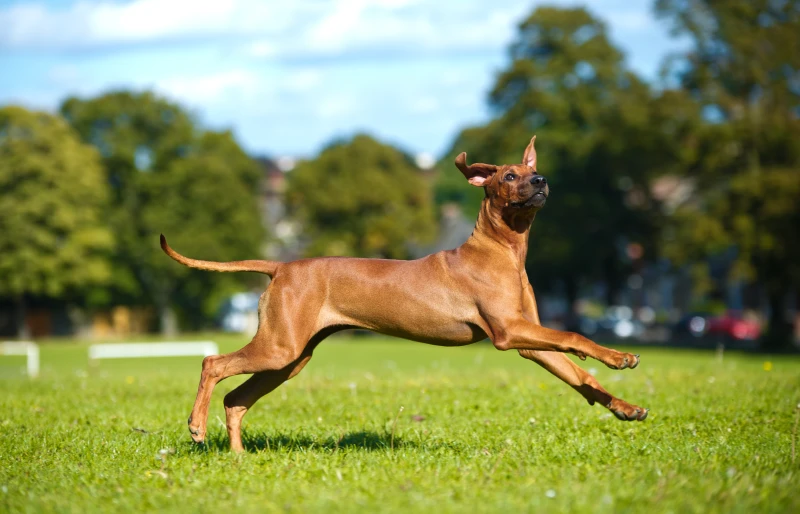
1. Breed
One factor that impacts the exercise needs of your dog is their breed. Some breeds, such as Retrievers, Collies, and Spaniels, are naturally active and may need more exercise than Pomeranians, Chow Chows, and Chihuahuas.
Therefore, you should always do your research about the exercise needs of your canine and ensure that you’re not training your pup too much or too little. Moderation is best for keeping your furry friend in good shape.
To help you understand your dog’s exercise needs better, check out this chart.
| Dog Breed | Exercise Needs |
| Boxers, Mastiffs, Chow Chows | 30 minutes per day (or slightly less) |
| Great Danes, Greyhounds, Bernese Mountain Dogs | Two 30-minute walks per day |
| Bulldogs, Pugs, Shih Tzus, Boston Terriers | 20–30 minutes per day |
| Yorkshire Terriers, Chihuahuas | 20 minutes per day |
| Dachshunds, Basset Hounds | 20–30 minutes per day |
| Pointers, Rhodesian Ridgebacks | Running (at least 3 miles a day) |
| Labradors, Golden Retrievers, Poodles | 45+ minutes per day |
2. Age
As dogs get older, they need less exercise. Older dogs are weaker and may have underlying health conditions that can affect their ability to run and exercise.
Generally, young puppies need moderate exercise because they’re still not fully developed. Activities should be divided into small bursts due to the lack of energy and physical capability for long exercise sessions.
Adult dogs typically need the most exercise, depending on other factors on the list. Senior dogs still need to exercise, but it shouldn’t be too hard or tiring, especially if they suffer from any health conditions.
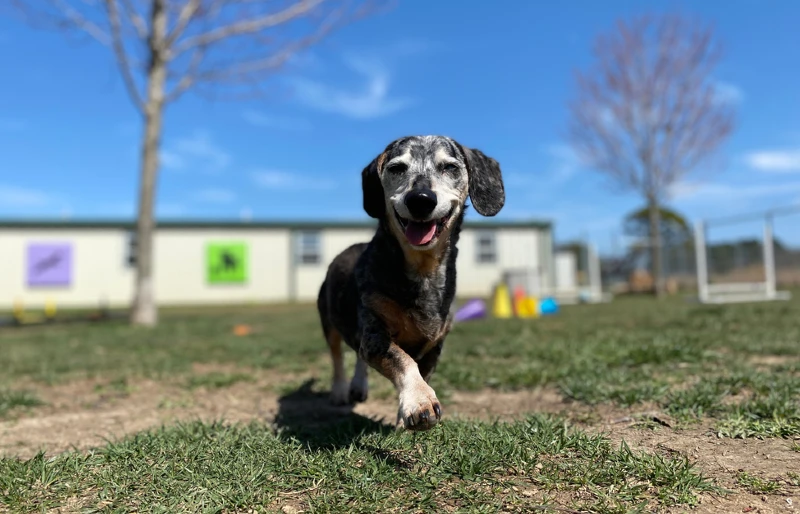
3. Health
Dogs with impaired health may need to exercise less than healthy dogs. Many health conditions in dogs cause them to be lethargic, and exercising may even inflict pain.
If you have a dog that has health issues, it’s best to speak with your vet to determine the precise amount of exercise that is suitable for your furry friend.
4. Personality
Some dogs are playful and like to run around. These dogs typically require more exercise because their bubbly personalities already make them active and energetic.
Conversely, calm dogs with gentle personalities may not be too excited to exercise or run around.
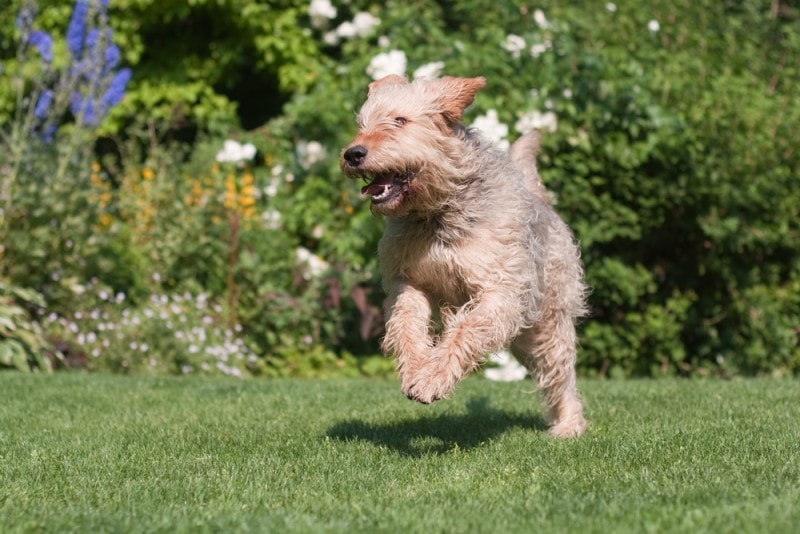
The 6 Signs That Your Dog Needs to Run and Exercise More
As a dog parent, you’re responsible for your pet getting enough exercise. Always ensure that your dog is eating properly, having enough stimulation, and exercising. Otherwise, your dog may be at risk for various problems. Dogs that don’t exercise enough will likely experience the following side effects.
1. Weight Gain
When dogs don’t exercise enough, they will slowly start to gain weight, which can be a big problem in dogs, as it can lead to them becoming overweight and eventually obese.
Obesity in dogs can cause further health problems, such as:
- Diabetes mellitus
- Arthritis
- Kidney disease
- Pancreatitis
- Cardiovascular disease
- Decreased life quality
As weight gain in your furry friend can lead to multiple health conditions, it’s essential to ensure that your dog exercises enough to avoid these problems.
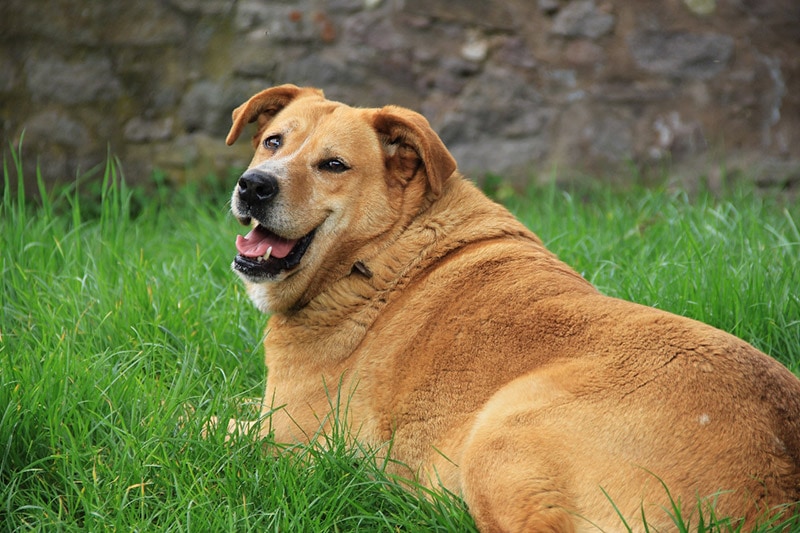
2. Lack of Endurance/Stiffness
Dogs that lack regular exercise may experience stiffness in their muscles, lack endurance, and be fatigued. If you notice any of these signs in your dog, there may be an underlying condition causing them to act that way.
If your dog seems stiff or lacks interest in exercise, it’s best to consult your vet to determine the best solution.
3. Destructive Behavior
If your dog suddenly starts to exhibit destructive behavior, ruining things around the home or acting out more than usual, they may need more physical activity. Dogs will often engage in destructive behaviors, such as chewing the furniture and showing aggression when they are bored and not stimulated enough. They need more exercise and activity.
However, remember to consult your vet too, as destructive behavior may be a sign of other issues, such as separation anxiety or trauma.

4. Hyperactivity
Many dogs that don’t get regular exercise may become hyperactive because there’s no way for them to release the energy buildup in their bodies. You will notice if your dog is hyperactive if they are excessively barking, shaking, and pulling the leash.
Try to have more regular walks or running sessions, and ensure that your dog gets at least some exercise time every day.
5. Excessive Barking/Whining
Dogs that don’t get enough exercise are typically more vocal than dogs that exercise enough. If your dog is barking or whining excessively, it may be a sign that they’re not exercising as much as they should be.
If your dog is barking or whining while pointing at the door or the leash, they likely want to go outside and play.
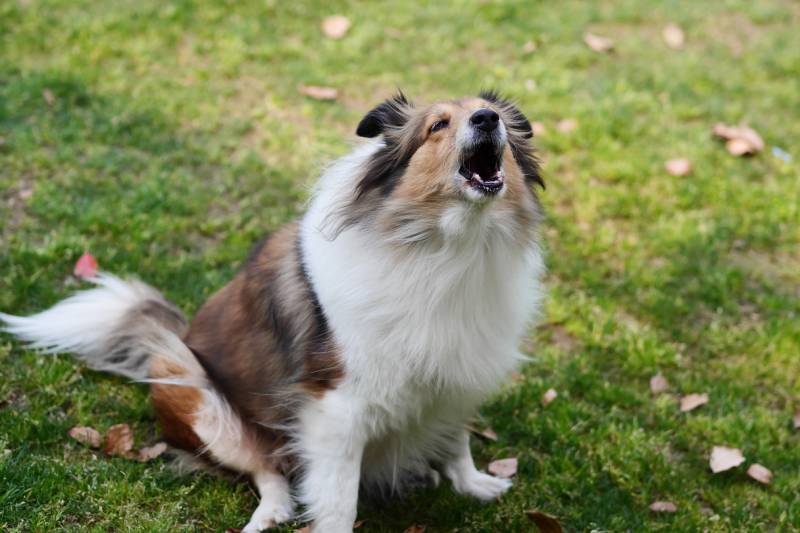
6. Becoming Withdrawn, Anxious, or Depressed
Some dogs may become depressed, withdrawn, or anxious if they don’t get enough exercise. This typically happens because the dog is not stimulated mentally or physically, which leads to behaviors such as avoiding people, sleeping too much, and acting less social than usual.
If your dog shows these signs, it’s best to talk to your vet and schedule a checkup to see what’s happening with them.
Final Thoughts
Dogs don’t need to run, but they do need exercise every day. A dog’s exercise requirements depend on their breed, age, health, and personality.
Before getting a dog, try to educate yourself on that breed’s exercise needs to ensure that you’ll be able to give your dog everything that they need for a healthy life.
Featured Image Credit: Ksenia Raykova, Shutterstock



